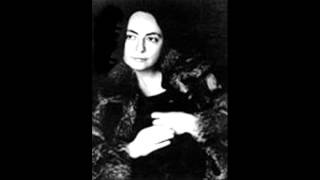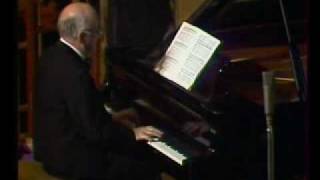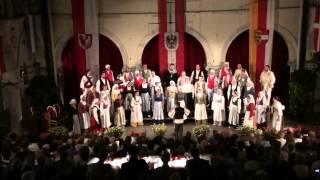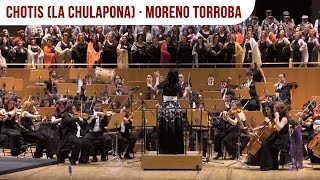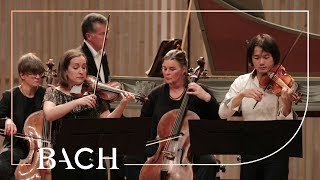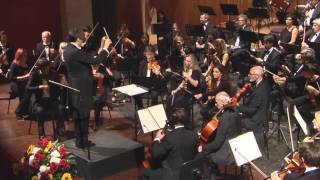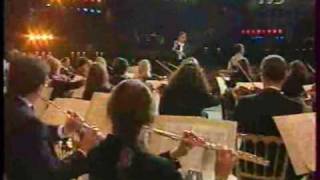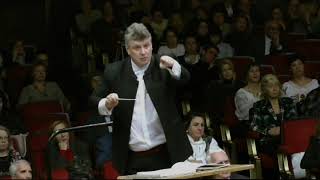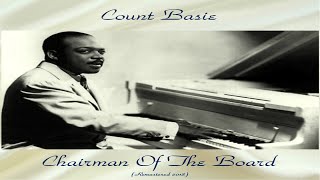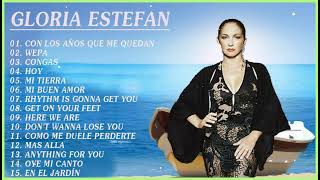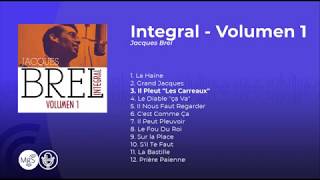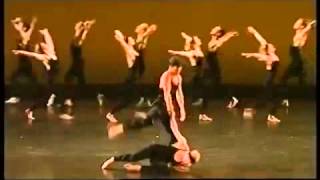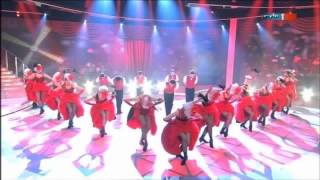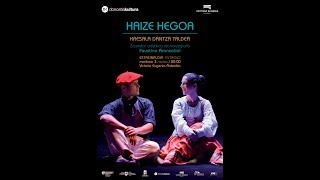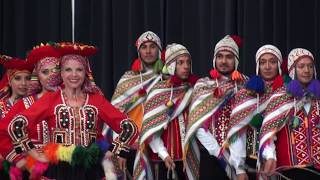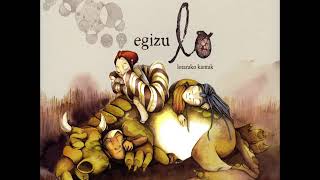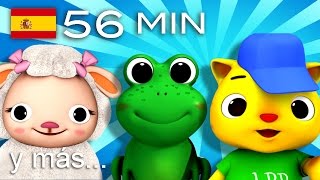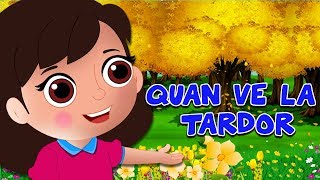Recommended music videos for initiation to classical music
Domenico Scarlatti (1685-1757) - Italian composer who settled in Spain , where he lived almost all his life - is known, above all, for his harpsichord sonatas. He was born in Naples , then belonging to the Spanish Crown , and began his studies with his father, Alessandro Scarlatti . At the age of 16 he was appointed composer and organist of the Royal Chapel of Naples . At 24, he entered the service of the Polish queen Maria Casimira who was exiled in Rome , where he was Kapellmeister of St. Peter's Basilica . In 1729 he moved to Seville where he lived until 1733, the year in which he established his permanent residence in Madrid where he composed around 500 sonatas, for which he has gone down in history. He died in Madrid at the age of 71.
D. Scarlatti's sonatas have a binary structure composed of a first part as an exposition and a second part that repeats, with some variations, the melodic and rhythmic elements that had already appeared in the first. Each part is repeated and ends with similar cadences, the first often on the dominant and the second on the tonic. This is a typical structure of the sonatas of the time, which we find in other keyboard sonatas by composers contemporary with Scarlatti , such as Antonio Soler .
His musical motifs are very rich and varied in each sonata, which is why it has been said that the composer explores all the capabilities of the instrument's keyboard, an exploration that in some sonatas leads to execution difficulties for the performer, with octave leaps or greater. , complicated arpeggios, very fast scales or crossing hands.
Today we offer a collection of 20 sonatas by Domenico Scarlatti by Alice Ader (1945), a renowned French pianist.
Franz Joseph Haydn (1732-1809), Austrian composer whose brother Michael Haydn was also a notable composer, was one of the main pillars on which classicism was based (1750-1810). At six years of age he began his studies of harpsichord and violin. At the age of eight he was admitted as a choralist at St. Stephen's Cathedral in Vienna where he continued his musical studies. After changing his voice, he had to survive by working multiple jobs, while studying composition analyzing the works of Carl Philipp Emanuel Bach . He maintained a close friendship with Mozart and was Beethoven 's teacher. He laid the main foundations of the sonata form and the formal structure of the string quartet and the symphony. He died at the age of 77 in Vienna .
The Keyboard Concerto No. 11 in D major was written by Joseph Haydn between 1780 and 1783 and structured in three movements; It is Haydn 's best-known keyboard concerto, especially the third movement, Hungarian rondo , which we offer today.
The rondo , round or circle dance is a secular musical form from the French Middle Ages based on the repetition of a musical theme that is characterized by the constant appearance of a chorus and a loving text. Couperin defined it as a form that is based on "a main theme that reappears and alternates with different intermediate themes, called couplets." The typical feature of any rondo is the return to the main theme after each digression, which provides contrast and balance; where the number and length of these are always different. These repetitions alternate with musical themes or episodes called contrasts ( A -B- A -C- A ).
Sviatoslav Richter (1915-1997) is recognized worldwide as one of the greatest pianists of the 20th century , famous for the depth of his interpretations, his virtuoso technique and his extensive repertoire.
Jesús Guridi (1886-1961) was born in Vitoria-Gazteiz into a musical family. After the family moved to Madrid , Guridi entered the Conservatory ; However, the economy did not go well for their parents, so they moved to Bilbao , where thanks to their patron, the Count of Zubiría , they were able to move to Paris and enter the Schola Cantorum to study piano, organ, counterpoint and composition. After finishing his studies, he went through Belgium , Cologne and Munich to delve deeper into them. Returning to Bilbao , at the age of 21, he took charge, as director, of the Bilbao Choral Society , a job that he combined with that of organist at the Basilica (now Cathedral) of Santiago . In 1939 he returned to Madrid , as director of the Conservatory , where he died at the age of 75.
Akerra Ikusi degu is an anonymous Basque song arranged by Guridi for mixed choir and today performed by Landarbaso Abesbatza under the direction of Iñaki Tolaretxipi .
Federico Moreno Torroba (1891-1982), born in Madrid , was one of the most vital and prolific cultivators of zarzuelas of the 20th century as well as a music critic and composer of pieces for guitar. Born into a family of musicians, he received his first lessons from his father José Moreno Ballesteros , organist of the Iglesia de la Concepción , and from Conrado del Campo at the Madrid Conservatory . His career as a composer was directed to the symphonic field, but he soon turned to zarzuela, composing some fifty titles. He affirmed his expressive style in the most traditional Spanish style, with direct and simple language, but of great formal elegance. In 1974 he took the position of president of the General Society of Authors of Spain , which he held until his death.
La Chulapona is a zarzuela in three acts, with music by Federico Moreno Torroba and libretto by Federico Romero Sarachaga and Guillermo Fernández-Shaw Iturralde . It premiered at the Calderón Theater in Madrid on March 31, 1934. Considered a representative work of Madrid traditionalism, it proposes a plot that moves away from traditional molds to create a story that breathes humanity, with psychologically studied characters and a plot that is more closer to tragedy than to the comedy itself (as its rating alludes), trying to recreate traditionalism more than the historicism of its predecessor Luisa Fernanda , with a score of great lyrical breath and moments of intense drama, which takes place in traditional Madrid from the end of the 19th century .
Chotis is a music and dance originating in Bohemia . Its name derives from the German term Schottisch ("Scottish"), a Central European social dance to which in Vienna they wanted to attribute origin to a Scottish dance. Various variants of schottisch survive in the Argentine tradition (schotis), Austrian, Brazilian (xote), Scandinavian (schottis), Spanish, Finnish (sottiisi), French (scottish), Italian (chotis), English (scottische), Mexican (chotís ), Paraguayan (choti), Portuguese (choutiça or chotiça), Swiss and Uruguayan (chotís or xote). The chotis is a tight and slow dance that is usually performed taking three steps to the left, three to the right and back. At the moment the music changes, the couple must change the circular direction of the movement.
In this video we show the Chotis from the zarzuela La Chulapona performed by the Madrid Metropolitan Orchestra and the Talía Choir , directed by maestro Silvia Sanz.
Recommended classical music videos
Johann Sebastian Bach (1685-1750) was a German violinist, organist, conductor and composer; He was born in Eisenach into the most prominent musical family in history with more than 30 famous composers within it. In 1703 he obtained his first job as a court musician for the Prince of Arndstat and in 1707 he moved to Mülhausen as an organist, where he married his cousin Maria Barbara with whom he had seven children. After the death of his wife in 1720, he remarried after a year and a half to María Magdalena with whom he would have another thirteen children. In 1723 he moved to Leipzig where he would reside until his death at the age of 65. A prolific composer, he is considered one of the main three geniuses in the History of Music along with Mozart and Beethoven.
The Concerto is a musical form written for one or more solo instruments accompanied by an instrumental ensemble. It was Vivaldi who established the fundamental bases of its structure with three movements ( I fast-II slow-III fast ) and presented as a dialogue between the soloists and the instrumental ensemble. Starting from classicism, especially from the bases created by CPE Bach , the first movement is built following the patterns of the sonata form, while the second and third movements are built under various free and specific forms. Frequently, at the end of the first and/or third movement, the soloists have a cadenza , often expressly written by the author with motifs from the same movement, with which they can show off their virtuosity.
The Concerto for Two Violins in D minor BWV 1043 was written by Bach in Leipzig between 1717 and 1723 for two solo violins and string orchestra; It is structured in three movements in the style of those times: I (0´08´´) VIVACE .-. II (3´51´´) LARGO MA NON TANTO .-. III (9´52´´) ALLEGRO and is considered one of the master's masterpieces.
Today it is performed by Arabella Steinbacher and Akiko Suwanai accompanied by the musicians of the Netherlands Bach Society
Antonio Salieri (1750-1825) was an Italian composer and conductor, who spent most of his life at the Imperial Court in Vienna . Salieri has seen his name linked to an alleged rivalry with Mozart , a rivalry that contains, in addition to accusations of plagiarism, a more serious one, which is that of having caused the death of the Salzburg composer, an episode without any historical basis. He had as students musicians who achieved great renown such as Beethoven, Schubert, Liszt, Czerny and Hummel . Among his pupils was even one of Mozart 's own children, which helps to disprove the legend of the bad relationship between the two composers. He wrote chamber music, symphonic music, sacred music, several concertos for different instruments and 39 operas.
26 Variations on the theme "La follia di Spagna" is a composition by Antonio Salieri , written in 1815, based on the well-known theme of Iberian origin "La follia ", for an orchestral ensemble. The follia is, in fact, a musical theme of Portuguese origin among the oldest in European music, originating from the 16th and 17th centuries , very loved by composers who used it a lot. Salieri composed the variations more as an exercise to investigate the symphonic possibilities achieved in art, than as an organic piece to be performed. Although recognized by critics as one of the most significant works of the Veronese composer, it remains rarely performed.
Today we will see it in performance by the Orchestra Regionale Filarmonia Veneta conducted by maestro Francesco Ommassini
Léo Delibes (1836 -1891) was a French romantic composer. His mother was a musician and his grandfather was an opera singer. His nephew Frédéric was the paternal grandfather of the Spanish writer Miguel Delibes . He began his musical studies at the Paris Conservatory in 1847, where he was a student of Adolphe Adam . As a composer, he achieved true fame in 1870 with the success of his ballet Coppélia; Among his other ballets it is also worth highlighting Sylvia , written jointly with Léon Minkus ; The Pizzicato of this ballet is very popular, one of Delibes ' greatest hits. He also composed several operas and operettas, a mass, a cantata and occasional music for the theater, such as dances and ancient airs.
Lakmé is an opera in three acts with music by Léo Delibes and a libretto in French by Edmond Gondinet and Philippe Gille , based on the novel Rarahu ou Le Mariage (Rarahu or Marriage), by Pierre Loti (1880) and set in the time of the dominion of British India .
Air de Clochettes ( Aria of the Bells ) is a highly virtuosic aria belonging to Act II of Lakmé , an aria intended for the performance of a light soprano, required to close the aria with an E6 at the end of its register. Together with the Flower Duet, it is one of the most frequently performed pieces of the aforementioned opera in concert.
Today it is offered to us by Natalie Dessay (1965), a French soprano with great agility in the treble and expressive ease in dramatic roles and one of the most eminent sopranos in France .
Karol Szymanowski (1882-1937) was a Polish pianist and composer who received his first classes from his father; He would later expand his knowledge at the Warsaw Conservatory . He traveled frequently around the world, trips that were frequently sources of inspiration for his works, and he died at the age of 55 in a sanatorium in Switzerland . He was influenced by traditional Polish music, his countryman Chopin and French impressionism. He wrote numerous piano works, four symphonies, two violin concertos, several songs, religious works, two operas and the ballet Harnasie .
Symphony No. 3 , Op. 27, (titled Song of the Night) by Karol Szymanowski is a work for choir and orchestra, with a solo part for tenor voice. He completed it in 1916 after a period traveling in Eastern Europe . Its sung text is a poem by the 13th-century Persian mystic Jalal ud-Din Rumi translated into Polish by Tadeusz Miciński , a friend of the composer; celebrate the beauty of the eastern night. Although an instrumental version of the symphony was performed in London in 1921, the complete world premiere with chorus and tenor soloist did not occur until February 3, 1928 in Lwów (Lviv, Ukraine). The work, today, is considered one of Szymanowski 's best works.
The symphony is influenced by Richard Wagner 's Tristan und Isolde and derives from Szymanowski 's use of chromatic harmony, as in Frédéric Chopin 's nocturnes, to represent the character of the night. Another influence is Alexander Scriabin 's tone poem, Prometheus , from which the symphony derives a mystical aura. A prominent feature of the work is the composer's formation of melodic voices that move independently of each other, in a manner that can be described as "interwoven polymelody."
The symphony consists of three movements: I (0´42´´) MODERATO ASSAI .-. II (8´09´´) VIVACE SCHERZANDO - ALLEGRETTO TRANQUILLO .-. III (15´46´´) LONG and is performed by the tenor Tomasz Zagórski , the George Enescu Choir and the Bucharest Philharmonic conducted by the British maestro Alexander Walker .
Recommended music videos for all tastes
Count Basie (1904-1984) was an American jazz pianist and Big Band conductor. He is one of the most popular jazz musicians in history, linked, for almost fifty years, to the direction of a Big Band with important influence on certain stylistic registers of jazz associated, mainly, with swing and its more traditional current. From 1927 he worked as part of different groups until in 1935 he built his own orchestra. His One O'clock Jump topped the charts in 1937; From then on his name as a pianist and Big Band director is one of the best known in history. He died of pancreatic cancer in 1984.
Gloria Estefan (1957) is a Cuban-American singer-songwriter, actress and businesswoman. Throughout her career, Gloria has sold more than 120 million records worldwide, 31.5 million of them in the United States , making her one of the best-selling music artists of all time. . Considered the "Mother of Latin Pop", Estefan has won multiple awards and recognitions; among them, seven Grammy Awards. He has a star on the Hollywood Walk of Fame .
Jacques Brel (1929 -1978) was a Belgian French-speaking singer-songwriter, actor and filmmaker. His songs are recognized for the poetry and sincerity of their lyrics. Perhaps his most international song is Ne me quitte pas (1959), which has been widely translated into various languages and performed by many singers. He turns out to be one of the most prominent exponents of the Chanson Française . His themes are extremely varied and, although he is considered a master of lyrics, the musical part of his compositions is also of the highest quality and is not limited to one style. He composed and recorded his songs almost exclusively in French and is widely recognized in French-speaking countries as one of the greatest French-language composers of all time.
Kesha is an American singer, rapper, songwriter, producer, businesswoman, dancer, activist, and actress. Their first single, " Tik Tok ", released in late 2009, reached number one in eleven countries, and to date, is the second best-selling digital single in history, with more than 14 million units sold internationally. . Later, in January 2010, he released his debut album, Animal , which debuted at number one in the US ; His next singles were very well received, as were his albums. Since her debut, Kesha has been nominated for over fifty awards, winning over twenty. Among these awards, he won the MTV Europe Music Award for Best New Artist in 2010 and several Billboard Awards.
Recommended peculiar videos
The Toccata and Fugue in D minor , BWV 565 is a piece of organ music written by Johann Sebastian Bach . The piece opens with a toccata section, followed by a fugue that ends in a coda . The first publication of the piece, in the era of Bach 's "revival", was in 1833 , thanks to the efforts of Felix Mendelssohn . Familiarity with the piece improved in the second half of the 19th century and even more so in the 20th century. with inclusion in Walt Disney's animated film Fantasia (orchestral transcription by Leopold Stokowski , the same one we offer today), until this composition came to be considered the most famous work in the organ repertoire.
The Paul Taylor Dance Company is a professional dance company founded by Paul Taylor , a 20th-century American choreographer and currently one of the first American modern dance companies. Paul Taylor performed in different national companies until 1954 when he founded his own company from which important dancers and choreographers emerged. Today they offer us the choreography of Bach's Toccata and Fugue , a work originally written for organ, although orchestrated and arranged by the British conductor of Polish descent, Leopold Stokowski (1882-1977).
Jacques Offenbach (1819-1880) was a French cellist and composer of German origin who converted to Catholicism so he could marry the Catholic Herminia de Alcain . He began his musical studies with his father, a music teacher; At the age of 14 his family moved to Paris where he continued his studies with Cherubini . In 1855 he founded the Bouffes Parisiens theater, where he staged his own works, which reflect the joie de vivre of his time. It also featured fun adaptations by other musical geniuses such as G. Rossini . His German ancestry earned him enemies after the Franco-Prussian War; enemies that he reflected with irony by representing them in his operettas. The greatest exponent of French operetta (he wrote hundreds of them), his remains rest in the Montmartre cemetery.
Orpheus in Hell is an operetta in four acts with music by Jacques Offenbach and a French libretto by Hector Crémieux and Ludovic Halévy . It is said to be the first long operetta; It was also the first time Offenbach used Greek mythology as a backdrop for one of his slapstick. The work refers to the myth of the poet and musician Orpheus and his wife, Eurydice , the oldest love myth of classical Greece and culminates in the infernal gallop , which we offer today; risque gallop that astonished part of the audience at the premiere and famous outside classical circles as the "can-can" music; It is the dance that the gods dance at the end of the opera until they drop dead. Today we see it in interpretation by the German company Fernsehballet .
Kresala Danza Taldea , created in 1968 by the dancer and choreographer Gene Yurre and directed since 1993 by Faustino Aranzabal , is a pioneering group in the Basque Country in the search for new paths in Basque dance.
Kresala today presents us with the projection of the future “ Haize Hegoa ” (South Wind). It will give a new look at newly created works and emblematic pieces in a singular contemporary scenic proposal. It is the night of a dance program made up of two parts: night and day, north and south, blacks and whites, or the two sides of the moon. 1· In the first part, the astral choreographic drama “ Zeruko ” will be presented, a Nordic work that encompasses the winds and sea of the Atlantic Ocean . 2· On the contrary, in the second part, the significant “Balanceo” will take place, of a Mediterranean nature with a southern wind from southern Europe , which will culminate in a hot and suggestive night that will be unrepeatable.
In short, “ Haize Hegoa ” combines a renewed vision of dance: dramaturgy and visual poetics, braiding pre-classical dance forms that give a new meaning to the performing discipline. This fascinating task has completed the last 50 years in a frontier and eternal activity, with the regeneration of a critically constructed choreutical heritage. ( Text extracted from the footer of the present video )
La Valicha is based on a song written in 1945 by Miguel Ángel Hurtado Delgado , which is about a love relationship with Valeriana Huillca ( Valicha is the Quechua abbreviation of the Spanish name Valentina) ; It is the most traditional and popular huayno (Andean dance) of Cuzco and has come to be considered by the Cuzqueños themselves as an anthem of this city. The inspiration for its composition arises from Miguel Ángel Hurtado 's love experience with Valeriana Huillca Condori ; As a dance, it shows one of the ways of dancing, feeling and spreading mountain music through a choreographic game of community participation. The celebration, characterized by the color of its typical costumes, is danced during popular festivals and at social gatherings; It is performed in pairs, generally of young people, and has an erotic and festive rhythm linked to the rite of love.
Recommended music videos for children
Various Wikipedia articles have been used to write these texts.
The texts of Videomusicalis are written in Basque, Spanish and English.





